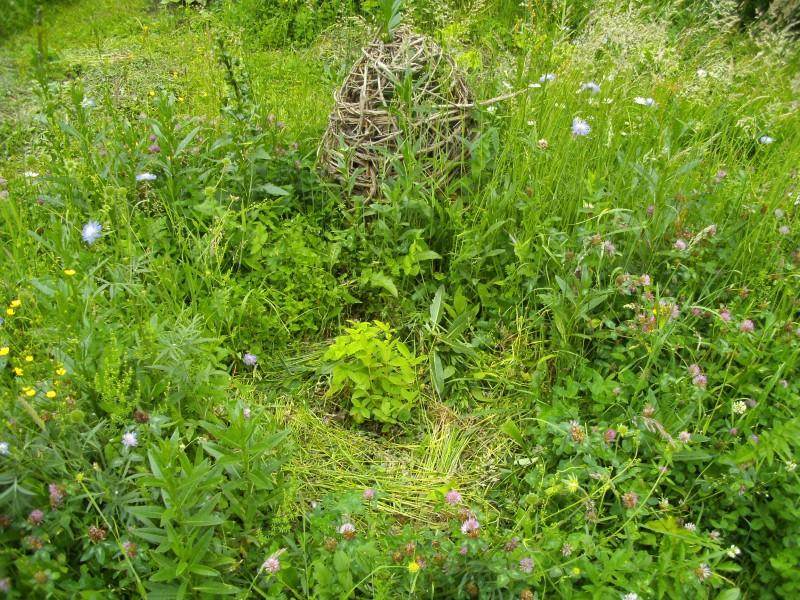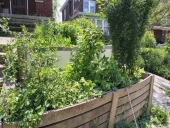
 4
4




Our projects:
in Portugal, sheltered terraces facing eastwards, high water table, uphill original forest of pines, oaks and chestnuts. 2000m2
in Iceland: converted flat lawn, compacted poor soil, cold, windy, humid climate, cold, short summer. 50m2
 1
1




Our projects:
in Portugal, sheltered terraces facing eastwards, high water table, uphill original forest of pines, oaks and chestnuts. 2000m2
in Iceland: converted flat lawn, compacted poor soil, cold, windy, humid climate, cold, short summer. 50m2









Tal Frulot wrote:I plant annuals under young fruit trees and bushes. In first year i usually just mulch them, in second year i grow annulas under them. Mostly those that can be sown in patches or planted by seedlings, because mulch is still to deep. Bush beans love it, peas, salad, calendula, brasicass, ... I just keep in mind they don't grow to big, trees and bushes are first priority. In second year i also just let grow the existing vegetation that comes through decaying mulch and chop it when it gets in a way of the fruit tree. Pawpaw hates full sun in first years, poles and runner beans on them are welcome on south side of a tree. Strawberries! I go crazy with strawberries under young trees and bushes after i mulch the trees. Here is one young guild. Pawpaw planted last fall. A meter to the south josta. Whole area was heavily mulched with existing meadow vegetation and then strawberries were planted under them. I also included origano inbetween the strawberries, and in spring this year there was also room for tomatoes, calendula, some brasicass. Everything is growing really good. Around this guild there are other guilds and i could write for hours.
Our projects:
in Portugal, sheltered terraces facing eastwards, high water table, uphill original forest of pines, oaks and chestnuts. 2000m2
in Iceland: converted flat lawn, compacted poor soil, cold, windy, humid climate, cold, short summer. 50m2
 2
2








Paulo Bessa wrote:Hi Tal Frulot,
Please write about your other guilds.
Pawpaw, josta, strawberries and oregano. Which tree shades the pawpaw?
Which guilds (or companions) are the tomatoes and brassicas part of?
Tal Frulot wrote:I plant annuals under young fruit trees and bushes. In first year i usually just mulch them, in second year i grow annulas under them. Mostly those that can be sown in patches or planted by seedlings, because mulch is still to deep. Bush beans love it, peas, salad, calendula, brasicass, ... I just keep in mind they don't grow to big, trees and bushes are first priority. In second year i also just let grow the existing vegetation that comes through decaying mulch and chop it when it gets in a way of the fruit tree. Pawpaw hates full sun in first years, poles and runner beans on them are welcome on south side of a tree. Strawberries! I go crazy with strawberries under young trees and bushes after i mulch the trees. Here is one young guild. Pawpaw planted last fall. A meter to the south josta. Whole area was heavily mulched with existing meadow vegetation and then strawberries were planted under them. I also included origano inbetween the strawberries, and in spring this year there was also room for tomatoes, calendula, some brasicass. Everything is growing really good. Around this guild there are other guilds and i could write for hours.


|
Story like this gets better after being told a few times. Or maybe it's just a tiny ad:
2024 Permaculture Adventure Bundle
https://permies.com/w/bundle
|



